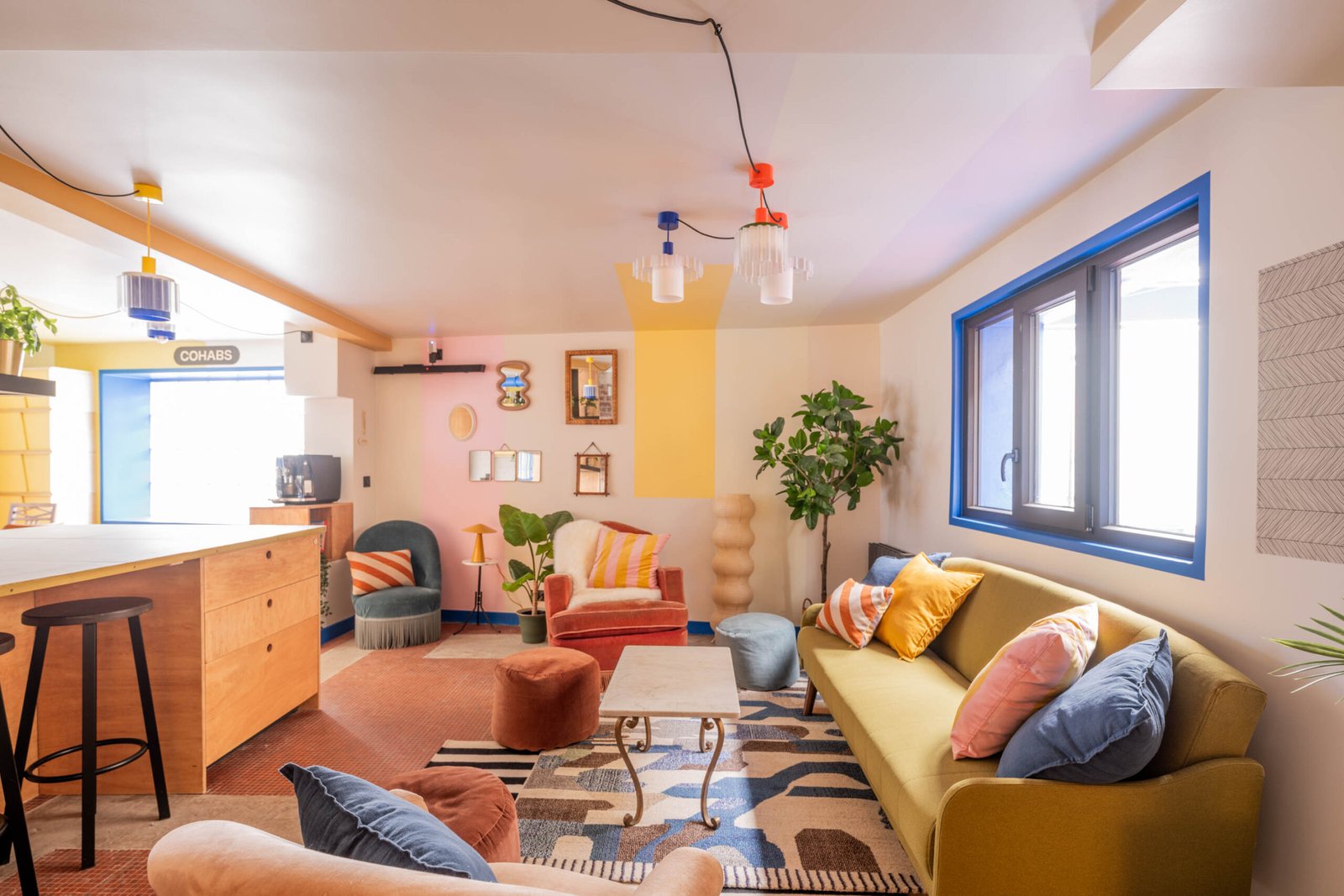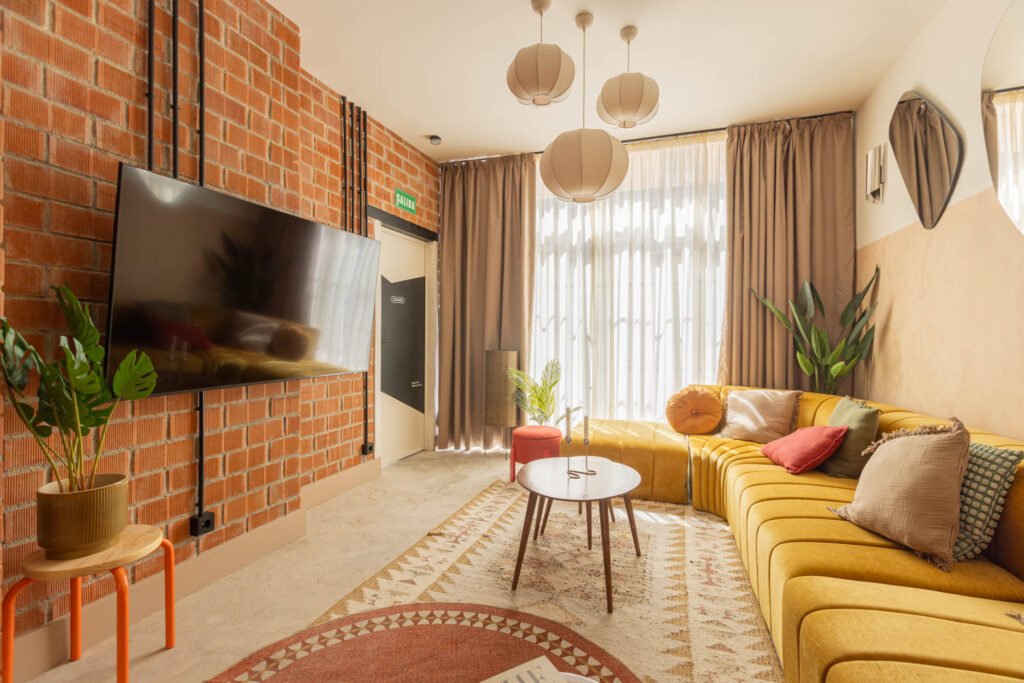
Finding affordable housing in a foreign country can be one of the biggest challenges for expatriates. As global mobility grows, more professionals, freelancers, and entrepreneurs are relocating abroad in search of better opportunities. However, with rising rental prices and shrinking apartment sizes in many major cities, traditional housing options are becoming less appealing.
Enter co-living — a modern housing concept designed for the new age of expats and digital nomads. Co-living spaces provide fully furnished, community-oriented housing with shared amenities, flexible leases, and a built-in social circle. They combine affordability with convenience, offering a sense of belonging in an unfamiliar city.
For many expats, co-living is not just about finding a place to stay; it’s about finding a place to belong.
Co-living refers to a shared housing model where residents rent private rooms or studios within a larger, community-focused property. Common areas such as kitchens, lounges, and workspaces are shared among residents, promoting collaboration and connection.
Unlike traditional shared apartments, co-living is professionally managed. It often includes:
This model appeals to expats who value social interaction, flexibility, and convenience. Whether relocating for work or adventure, co-living spaces provide a stress-free way to settle in quickly without the hassles of long-term contracts or setting up utilities.
The shift toward co-living is not accidental. Several key trends have fueled its growth among expats worldwide.
1. Rising Housing Costs
In cities like Dubai, London, Singapore, or Hong Kong, rent prices can be overwhelming for newcomers. Co-living provides a cost-effective solution where residents can save up to 30–40% compared to renting a full apartment alone.
2. Flexible Leases and Hassle-Free Setup
Most expats prefer flexibility — they might stay for six months, a year, or even just a few weeks. Co-living spaces cater to this need by offering short-term or month-to-month leases with minimal deposits. Everything from utilities to furniture is already set up, saving time and effort.
3. Built-In Community and Social Support
Moving to a new country can be lonely. Co-living helps ease that transition by fostering a sense of community. Events like cultural nights, shared dinners, or skill-sharing workshops bring residents together. This is particularly valuable for solo expats or remote workers seeking companionship and networking opportunities.
4. Designed for Remote Work and Digital Lifestyles
The rise of remote work has made co-living an ideal solution for digital nomads. Many co-living spaces include high-speed Wi-Fi, coworking areas, and even meeting rooms — making it easy to balance work and lifestyle.
5. Sustainable and Minimalist Living
Co-living aligns with the modern minimalist mindset. By sharing resources and reducing waste, it promotes sustainability. Many co-living operators design eco-friendly spaces using energy-efficient systems, smart appliances, and locally sourced materials.

Living abroad often comes with emotional challenges — culture shock, language barriers, and homesickness. Co-living addresses these struggles by fostering meaningful human connections.
Residents often describe co-living communities as “families away from home.” These environments encourage collaboration, empathy, and friendship among people from diverse cultural backgrounds. For example:
For expats, these social interactions can make all the difference between feeling isolated and feeling integrated into their new environment.
The financial aspect is one of the biggest reasons co-living appeals to expats. Traditional rentals often require large deposits, agent fees, and utility setups — a burden for newcomers. Co-living eliminates these costs through an all-inclusive model.
Let’s break down the financial benefits:
When compared to the cost of renting an individual apartment, co-living provides an economical alternative that doesn’t compromise comfort or lifestyle.
Certain cities are leading the co-living revolution, attracting expats from all over the world.
1. Dubai – With its large expat community and high rental prices, co-living spaces in Dubai are booming. They cater to professionals seeking flexibility and community living in prime areas.
2. Singapore – Known for efficiency and innovation, Singapore’s co-living operators offer luxury-style shared spaces that appeal to young professionals.
3. London – London’s sky-high rent has made co-living an affordable option for millennials and expats. Most co-living spaces are located near public transport and work hubs.
4. Berlin – Germany’s capital attracts digital nomads and creatives, with co-living spaces that blend affordability and artistic flair.
5. Bangkok – Popular with freelancers and entrepreneurs, Bangkok offers co-living spaces that combine comfort with community at a fraction of Western prices.
Modern co-living developments are designed for comfort and convenience. A typical space includes:
Every detail is curated to make residents feel at home — from high-speed connectivity to modern interiors.
Technology plays a crucial role in making co-living efficient and appealing. Mobile apps and digital platforms are used for:
These tech integrations ensure smooth communication and enhance the overall living experience.

Despite its advantages, co-living isn’t without challenges. Some expats may find it difficult to adjust to shared spaces or cultural differences within a diverse community. Privacy can sometimes be limited, and high-demand cities might have limited availability or higher prices for premium co-living options.
It’s also important for expats to research the credibility of the operator. Professional management, transparent contracts, and responsive customer service are key indicators of a reliable co-living provider.
The future of co-living looks bright. As global mobility increases, more professionals will seek flexible, community-oriented housing solutions. Real estate developers and investors are already expanding co-living projects across major cities to meet growing demand.
In the coming years, expect to see:
The evolution of co-living will continue to redefine urban housing, offering a blend of affordability, flexibility, and lifestyle — perfect for the global expat community.
At its core, co-living represents a cultural shift. It reflects changing values — from ownership to sharing, from isolation to community, and from rigidity to flexibility.
For expats, it provides an affordable, meaningful, and connected way to experience life abroad. Beyond just saving money, co-living helps people thrive personally and professionally by building relationships that enrich their journey.
In a world where people are increasingly mobile yet craving connection, co-living is not just an alternative — it’s the future of living.
Do Follow Estate Magazine on Instagram
How to List Your Property in Dubai for Maximum Exposure & Success
